Actually, it all makes sense: first tests of the modernized, second stage or call it what we want Su-57 in 2022, finish of the tests by 2024, and possibly they can be performed on a production unit as you say.
Well, that's exactly what I mean.
Actually, it all makes sense: first tests of the modernized, second stage or call it what we want Su-57 in 2022, finish of the tests by 2024, and possibly they can be performed on a production unit as you say.
No word either on by far the biggest stealth problem on the Su-57, the lack of edge alignment and serrations on panel joints.
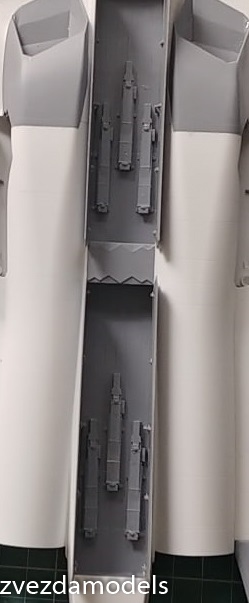
What? Where do you see lack of edge alignment on T-50? Su-57 is coated by thicc RAM and panels that are to be accessed a lot are serrated. Is it perfect solution? Probably not, but it probably gets 99,9% there with far less complexity and cost.
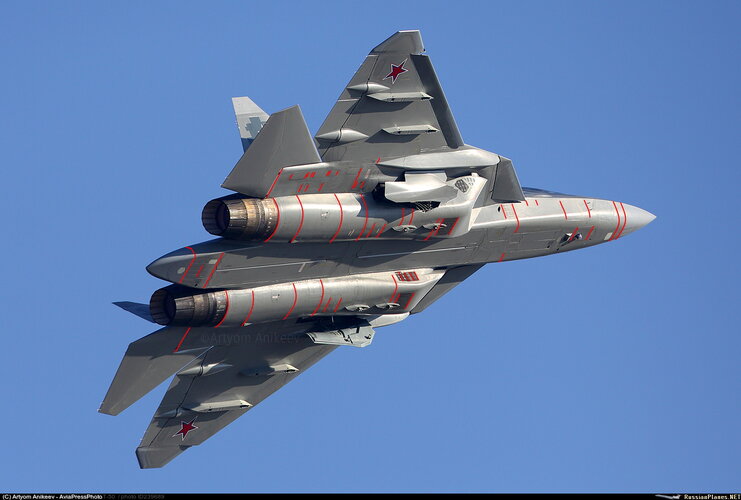
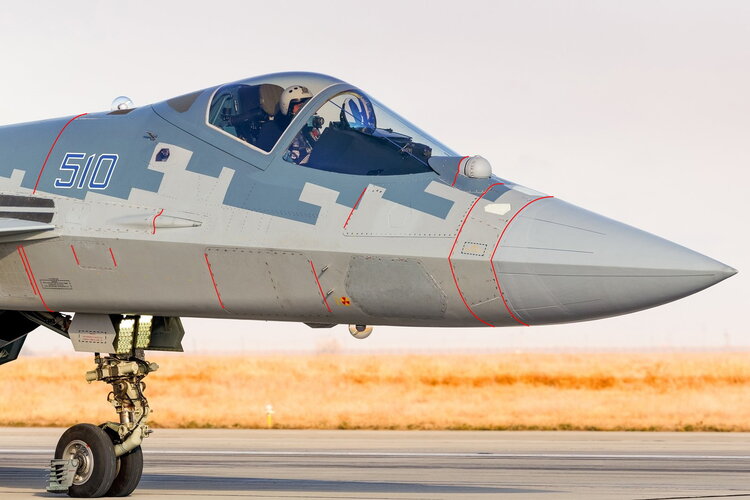
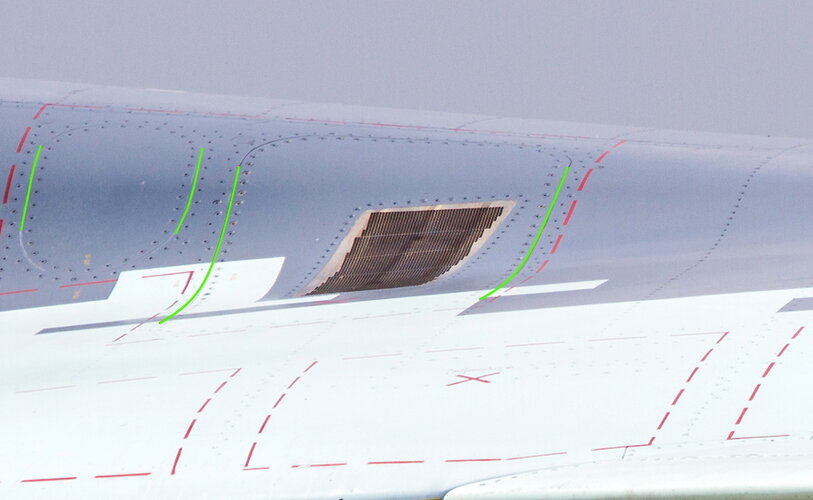
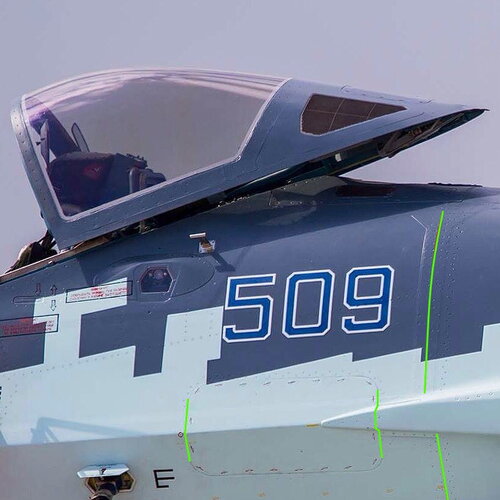
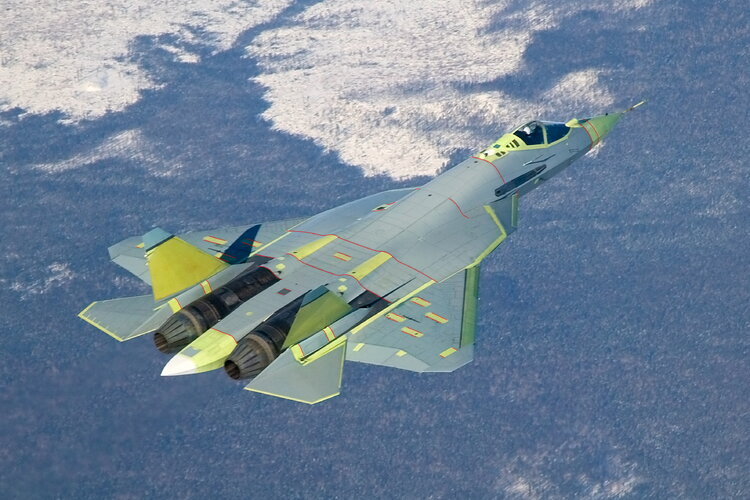
EDIT; In other news, it is probably nothing, but in case it isnt nothing... Zvezda's 1/48 Su-57 with weapon bays and three ejectors...
No word either on by far the biggest stealth problem on the Su-57, the lack of edge alignment and serrations on panel joints.
EDIT; In other news, it is probably nothing, but in case it isnt nothing... Zvezda's 1/48 Su-57 with weapon bays and three ejectors...

What? Where do you see lack of edge alignment on T-50? Su-57 is coated by thicc RAM and panels that are to be accessed a lot are serrated. Is it perfect solution? Probably not, but it probably gets 99,9% there with far less complexity and cost.
The joints marked on the following photos are gaps between separate panels (as opposed to rows of fasteners within the bounds of an individual panel) and as such should be aligned/serrated. As you say, they ARE coated with RAM on the most recent prototypes, but the F-22, F-35 and J-20 use both alignment and RAM for such seams.
Использование токопроводящих герметиков позволяет обеспечить электрическую проводимость между отдельными конструктивно-технологическими элементами планера, что, в свою очередь, позволяет исключить составляющую в ЭПР самолета «неоднородностей» (типа щель, стык) за счет того, что при отсутствии электрических неоднородностей отсутствует рассеяние поверхностных ЭМ волн.
https://findpatent.ru/patent/250/2502643.html
© , 2012-2020
The use of conductive sealants makes it possible to ensure electrical conductivity between individual structural and technological elements of the airframe, which, in turn, eliminates the component in the RCS of the aircraft of "inhomogeneities" (such as a gap, a joint) due to the fact that in the absence of electrical inhomogeneities there is no scattering of surface EM waves
Isn't conductive tape at the gap a feature of all stealth aircraft?In Sukhoi's patent about radar signature management solutions on PAK FA the solution they offer for this exact problem is the use of conductive sealants on these gaps. The conductive sealant allows the electromagnetic wave to pass the gap without causing scattering behavior.
The relevant part:
Использование токопроводящих герметиков позволяет обеспечить электрическую проводимость между отдельными конструктивно-технологическими элементами планера, что, в свою очередь, позволяет исключить составляющую в ЭПР самолета «неоднородностей» (типа щель, стык) за счет того, что при отсутствии электрических неоднородностей отсутствует рассеяние поверхностных ЭМ волн.
https://findpatent.ru/patent/250/2502643.html
© , 2012-2020
And a google translation of it:
The use of conductive sealants makes it possible to ensure electrical conductivity between individual structural and technological elements of the airframe, which, in turn, eliminates the component in the RCS of the aircraft of "inhomogeneities" (such as a gap, a joint) due to the fact that in the absence of electrical inhomogeneities there is no scattering of surface EM waves
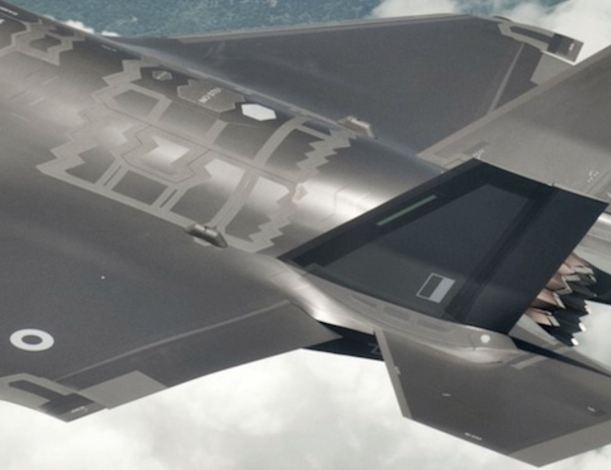
In Sukhoi's patent about radar signature management solutions on PAK FA the solution they offer for this exact problem is the use of conductive sealants on these gaps. The conductive sealant allows the electromagnetic wave to pass the gap without causing scattering behavior.
I find myself quite surprised that I never heard of this solution to the non serrated panel gaps. Might be quite a simple solution and explain Sukhoi's choice in this matter. I don't think it may be enough though.In Sukhoi's patent about radar signature management solutions on PAK FA the solution they offer for this exact problem is the use of conductive sealants on these gaps. The conductive sealant allows the electromagnetic wave to pass the gap without causing scattering behavior.
Excellent find, I was mentioning exactly this option in Trident's "Su-52" thread as was also apparently explored by Northrop in the past. What would be the point for Sukhoi to serrate the edges of doors that cannot be sealed on the ground and leave other covers (pretty much all of the plane's seams according to him) scattering freely? I understand the sealants are not external but form a layer between the fuselage and the covers, since I have not seen tape covering those gaps, does anybody know better? In fact the solution seems more elegant than the Western one...
BTW, re. the IRST issue also in discussion where I proposed its aperture to be transparent to RF instead of a spherical reflector as it is widely claimed: we know it has RAM on the backside, but why would they employ RAM inside if the glazing was reflecting RF? This is elementary...
Such basic thoughts as those two above are normally not even considered when criticising the plane, we instead talk about "reducing" Su-57's RCS, when we have no idea how big or small it is to start with...
Much of mine and I am assuming others on this site's familiarity with VLO design principles comes from observations of Western stealth aircraft and how they implement such features, combined with open literature on the subject. Principles like a near fanatical adherence to edge alignment + RAM are very easy to see and understand, which when combined with relatively open sources regarding its success informs us of such VLO design philosophy.Such basic thoughts as those two above are normally not even considered when criticising the plane, we instead talk about "reducing" Su-57's RCS, when we have no idea how big or small it is to start with...
Isn't conductive tape at the gap a feature of all stealth aircraft?
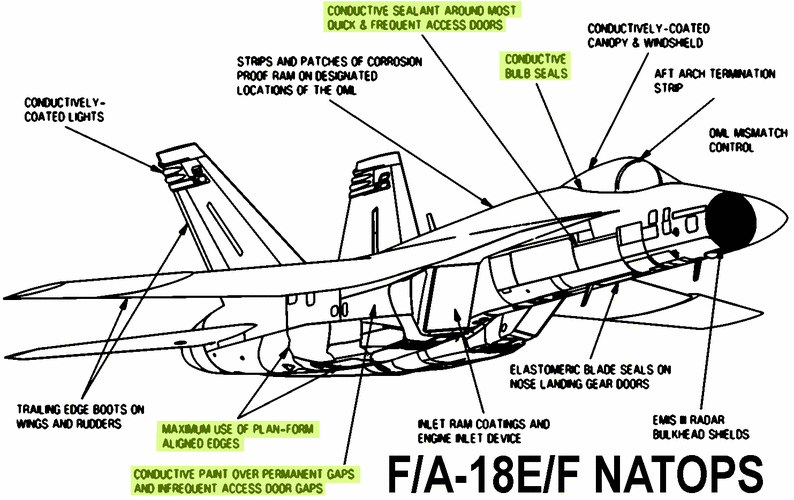
That said the Indian's put their FGFA on hold and insufficient stealth was one of the stated reasons. So maybe Western criticisms may have some merit but we have no idea how stealthy of an aircraft India wants. And heavens knows if a partial or full Trident optimization of the Su-57 would bring it up to Western or let alone Indian Standards. (IMO it would though)
I don't think it may be enough though.
So naturally we apply the same scrutiny to the Su-57 and are puzzled by what we see. The seeming incongruent choices regarding finer edge alignment of the panels, lower aft engine nacelles and additional serrations puzzles us when one also see's the work put into reducing the RCS by said principles. As seen from the front aspect and elsewhere.
That said the Indian's put their FGFA on hold and insufficient stealth was one of the stated reasons.
Conductive sealants are NOT a substitute for alignment/serration (even on the only semi-LO Super Hornet shown above, a large fraction of the relevant gaps is aligned).
The second line of questioning is one that is often forgotten about.Same question as above, what is the difference in global RCS values at what frequencies and aspects? How do they impair the plane's tactical performance in the designated conditions? Do we at least have a technically supported dB estimation of the difference they make?
My final words in this thread
Dear all,
since the beginning of this Saga, I have tried to post only reliable, unbiased and truthful information about the programme of the "5th gen. fighter", PAK FA, T-50, whatever it might be called and is called by the "community" and the gullible media and "experts". Obviously, because of the aforementioned ethical prerequisites, I haven't posted that much.
For the time being, I am relatively proud to say that none of my "supputations", suppositions and information that I have provided has proven untrue. Indeed, it seems that Zelin himself confirms (for example) the all-aspect sensor fusion I have talked about more than a year ago.
I have also written here that the "PAK FA" or whatever will be "more like the YF-23 than the F-22". I have also stated that those who expect some kind of flying sauski or Firefox will be disappointed, as the RuAF requirements for the PAK FA differ from USAF requirements for the Raptor. I have also pointed out that the main breakthrough, and the main challenge, of the PAK FA programme will not be new aerodynamics, amazing stealth or incredible overall characteristics, but simply total sensor fusion and the implementation of brand new weapon systems and a very potent sensor/RWR/ECM suite.
Why do I point that out again?
Because this post is going to be my last post on this thread until the subject matter will publicly fly.
Why that?
I am sick and tired of reading speculations and trying to temperate them.
I am sick and tired of seeing artists renderings, some good, some less, being naively discussed as if the honorable person who devised them on his or her PC between 2am and a bottle of Moskovskaya (or Château Rotschild 1956 for that matter, I don't care) had the Sukhoi blueprints next to the keyboard.
And on top of it, I am very, very tired of all the nationalist, pro-Russian, anti-Russian, pseudo-pro-anti-Russian redneck whatever ramblings that seem to enthuse the hon. members of this board much more than thinking about the next word they will use in order to describe their honorable feelings.
My last input:
Russian mass-media are not autocracy-driven, or democratic, or free, or unfree - they are just (for defense matter) mostly lame and incompetent.
Zelin has talked about 3 "5th gen. programmes".
He meant: PAK FA, PAK DA, future land-attack UCAV. No it's not the Skat.
He did not mention any "august 2009" deadline. The journalists made that up.
The said programme is doing well and progressing fast.
The airframes are all but ready.
Integration will be a big challenge, but I'm confident.
And again, "the first flight will not be the first"
Now.
If I wouldn't be so upset about what I read and if I would claim some recognition and respect, I would certainly humbly ask the moderators to close the thread till next summer at least because it's getting nowhere.
But as I'm certainly not - please go on and speculate further and further - the sky's the limit.
Till you see the real thing you all dream about, sometime next year, and then start an infinite number of threads like "PAK FA (it will be Su-.. ... by the time) vs F-22", "PAK FA is a hoax" or "PAK FA is not really stealthy (for flamers)".
All in all, God bless you all, let 2009 be better than the pundits say it will be and clear skies ahead.
Indian procurement is something of a soap drama, such delays and cancellations are not unexpected. Hell for me they are a source of entertainment.
That said the Indian's put their FGFA on hold and insufficient stealth was one of the stated reasons. So maybe Western criticisms may have some merit but we have no idea how stealthy of an aircraft India wants. And heavens knows if a partial or full Trident optimization of the Su-57 would bring it up to Western or let alone Indian Standards. (IMO it would though)
India never had access to the program to such a level where they could asses its RCS or levels of stealth.
Stealth inadequacy was just part of a litany of reasons made up by Indian media, when the reality is- they couldn't afford it last decade, and the bird would not have been ready back then for purchase in any case. They did not have the means to add to its development either.
Just look at their drawn out Rafale purchase.
In regards to it not or being enough, my opinions remain "semi-informed" as I would say. The obsessive level of American effort in reducing RCS with such measures remains my baseline so I remain sort of skeptical of the Russian method. I am however quite open to change in this area for its ever apparent that they know more than me. And the Russian aims and goals n this area are complex and informed by the very factors you mention. I don't think its as bad as many think but it does leave me scratching my head while I look for more. There is simply too much I don't know.How much it is enough? You know, this is a very complex issue that depends not in some boutique values but in some specific detection ranges under certain conditions, aspects, frequencies, illumination power and what not. It is not some schoolyard discussion about if US' way is VLO and Russia's is not.
In regards to the round nacelles and solutions I don't think I tried to be categorical on that topic, my apologies for being unclear in that. Again it relates to my points stated above. I am only going on what I know while keeping in mind that I don't have all the details at hand to understand the Russian design. Its just that the two different approaches of RCS reduction, Edge Alignment a la American philosophy and Russian materials and conductive paneling seals produce something that looks unusual to my American eyes. When one looks at the J-20 one is only left with questions that need answers.Sure, and I think that being sceptical is perfectly legitimate, I am myself puzzled about the round section of the nacelles too, but being categorical is IMHO out of place, we do not know the real performances of the design solutions taken and compromises incurred by US or Russia. Maybe one solution is better in X band but the other is better overall over a broader band, or a specific approach was taken like using a certain material that provides destructive interference at a certain wavelength at a given critical spot. There are simply too many complexities involved to know from the outside.
Its only what I could find in reporting. And the reporting itself never names the sources other than the vague descriptions of origin. I would like to know more of the Indian involvement in the FGFA and its true extent.Was that ever stated officially or were "sources" quoted?
There are talks that Su-57 will indeed be sheltered from harsh climate conditions within Russia. What kind of shelters remains to be seen.Why don't we wait to see what the new prototype looks like before calling it crappy? it is really pointless to eye-meter the stealth of a prototype. Let's not forget the Russians are building this thing to satisfy their needs and not the Western airforces. Honestly, do you imagine an f-22 type operating in Russia? Left outside during the cold winter and then taxing in runways full of grass, rocks, ice, and then have some young kids work on it? I don't see it happening or staying pristine. Maybe they deem it stealthy enough to be practically useful without breaking the bank, especially since they don't spend the same amount of money other countries do. I also think this is their new "su-27" and they hope to evolve to new "su-30, 35, 34s" levels.
I miss him, he was a mine of reliable information.He got big time pissed there....what was both boring and amusing is when he would call Bs to Garry B.Whenever I see talk about stealth I always remember this post from 12 years ago, especially the part at the end. Some of you may remember him:
RSM55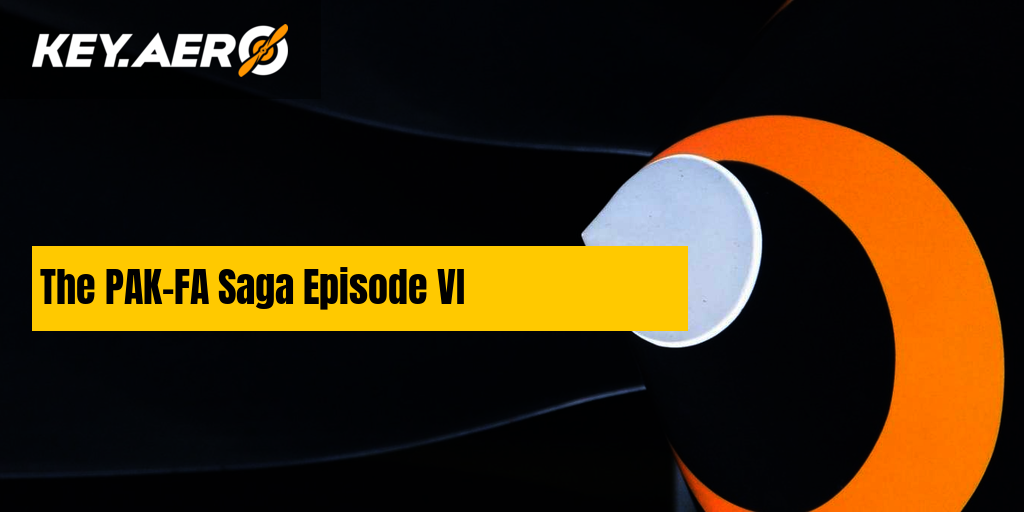
My final words in this thread
Dear all,
since the beginning of this Saga, I have tried to post only reliable, unbiased and truthful information about the programme of the "5th gen. fighter", PAK FA, T-50, whatever it might be called and is called by the "community" and the gullible media and "experts". Obviously, because of the aforementioned ethical prerequisites, I haven't posted that much.
For the time being, I am relatively proud to say that none of my "supputations", suppositions and information that I have provided has proven untrue. Indeed, it seems that Zelin himself confirms (for example) the all-aspect sensor fusion I have talked about more than a year ago.
I have also written here that the "PAK FA" or whatever will be "more like the YF-23 than the F-22". I have also stated that those who expect some kind of flying sauski or Firefox will be disappointed, as the RuAF requirements for the PAK FA differ from USAF requirements for the Raptor. I have also pointed out that the main breakthrough, and the main challenge, of the PAK FA programme will not be new aerodynamics, amazing stealth or incredible overall characteristics, but simply total sensor fusion and the implementation of brand new weapon systems and a very potent sensor/RWR/ECM suite.
Why do I point that out again?
Because this post is going to be my last post on this thread until the subject matter will publicly fly.
Why that?
I am sick and tired of reading speculations and trying to temperate them.
I am sick and tired of seeing artists renderings, some good, some less, being naively discussed as if the honorable person who devised them on his or her PC between 2am and a bottle of Moskovskaya (or Château Rotschild 1956 for that matter, I don't care) had the Sukhoi blueprints next to the keyboard.
And on top of it, I am very, very tired of all the nationalist, pro-Russian, anti-Russian, pseudo-pro-anti-Russian redneck whatever ramblings that seem to enthuse the hon. members of this board much more than thinking about the next word they will use in order to describe their honorable feelings.
My last input:
Russian mass-media are not autocracy-driven, or democratic, or free, or unfree - they are just (for defense matter) mostly lame and incompetent.
Zelin has talked about 3 "5th gen. programmes".
He meant: PAK FA, PAK DA, future land-attack UCAV. No it's not the Skat.
He did not mention any "august 2009" deadline. The journalists made that up.
The said programme is doing well and progressing fast.
The airframes are all but ready.
Integration will be a big challenge, but I'm confident.
And again, "the first flight will not be the first"
Now.
If I wouldn't be so upset about what I read and if I would claim some recognition and respect, I would certainly humbly ask the moderators to close the thread till next summer at least because it's getting nowhere.
But as I'm certainly not - please go on and speculate further and further - the sky's the limit.
Till you see the real thing you all dream about, sometime next year, and then start an infinite number of threads like "PAK FA (it will be Su-.. ... by the time) vs F-22", "PAK FA is a hoax" or "PAK FA is not really stealthy (for flamers)".
All in all, God bless you all, let 2009 be better than the pundits say it will be and clear skies ahead.
It's nice that he talked about Okhotnik before that was even a thing.
Considering the detailed changes between Phase 1 and Phase 2 frames (note the main weaponbay doors for instance) they have good understanding of the details and where they are worth it. According to the now chief engineer of the project, T-50 exceeded the stealth requirements. And someone who has worked on the stealth of F-22 and F-35 claimed T-50 is "metal marble class". Personally i dont think T-50 is as stealthy as F-22 - but i think it is stealthier than what most people give it credit for being.All the evidence points to a basic airframe configuration optimised for low RCS from the front only, with lesser regard for other angles.
The existing Su-57 airframes don't show the attention to detail needed for a truly low (VLO) RCS. We have no idea what the requirement was however - presumably it meets the requirements in the area.
Considering the detailed changes between Phase 1 and Phase 2 frames (note the main weaponbay doors for instance) they have good understanding of the details and where they are worth it. According to the now chief engineer of the project, T-50 exceeded the stealth requirements. And someone who has worked on the stealth of F-22 and F-35 claimed T-50 is "metal marble class". Personally i dont think T-50 is as stealthy as F-22 - but i think it is stealthier than what most people give it credit for being.
overscan said:The existing Su-57 airframes don't show the attention to detail needed for a truly low (VLO) RCS.
OTH and low frequency radars are difficult to fit in aircraft and near impossible to fit in missile seekers, I'd say. Finding something isn't the same as shooting it down.The real issue IMO is that narrow band stealth has already been defeated, so what is the point of going for impossibly low RCS values in X band, with fundamental effects on other aspects of the plane's performance, when you are being detected and even tracked otherwise? What does (hypothetically since no one here has measured either plane's RCS) gain a F-22 or F-35 from seeing the Su-57 say 5 km before the Sukhoi detects them, if they have been already glowing for hours on the screens of OTH and low frequency radars?
I don't think this is just a future concept but an actual requirement set by RuAF for Okhotnik project. You have proof in 053 airframe and the fact that only one month after the first flight, Okhotnik was already doing MUM-T with Su-57 (055 airframe). Due to autonomous nature there is no need for control by pilot.Eighter way, i'd see this as a future concept. For now, Okhotnik would have to work properly with a Ground Controller, and then move on to a Air assets, like AWACS. To have a singel crew jet controlling this thing seems too early.
you make an assumption that F-22 and F-35 are only stealthy in X band. The only stealth aircraft with serious optimisation for a specific band was F-117. From B-2 onward, it's been more balanced.
Secondly, low frequency radars are imprecise, and historically good only for early warning. OTH are similar - good for knowing the Russian bombers are on their way, not so good at telling you precisely where. Modern processing can improve things but I think the jury is still out on real world examples.
In your specific example, say the Su-57 is 0.01 sq m RCS and the F-22 is 0.001 sq m RCS. This will translate to a 44% reduction in detection range for the Su-57 compared to the F-22 given identical radars.
A lower RCS means ECM is potentially more effective, and also will likely affect missile seekers more. There may even be a floor value below which the seeker cannot ever lock on. In this case, you are down to IR missiles only.
So, even if the Su-57 pilot knows roughly where the F-22 is from early warning radars, the F-22 pilot will have the advantage of knowing exactly where the Su-57 earlier.
Lastly, "narrow band stealth has been defeated" when all aircraft, SAMs, ground radars in service are able routinely to track and shoot down stealth aircraft. I think we are very far from that world. Even if Russia develops such a radar and SAM and aircraft and AAM today, until every threat nation buys them, then stealth still has value.
Stealth aircraft aren't invisible, they only intended to reduce detection range enough so that they detect and attack enemy before they are attacked themselves.
They are visible in lower frequency radars, that is all is needed to know. Of course they show useful reductions on L band and even below, but that is simply not enough today.
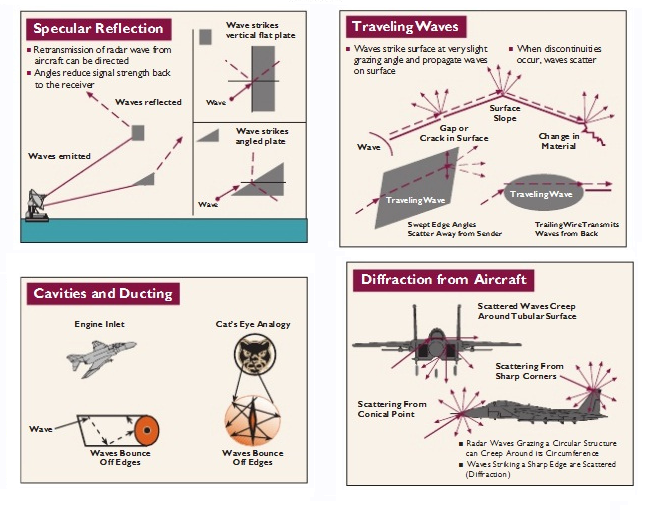
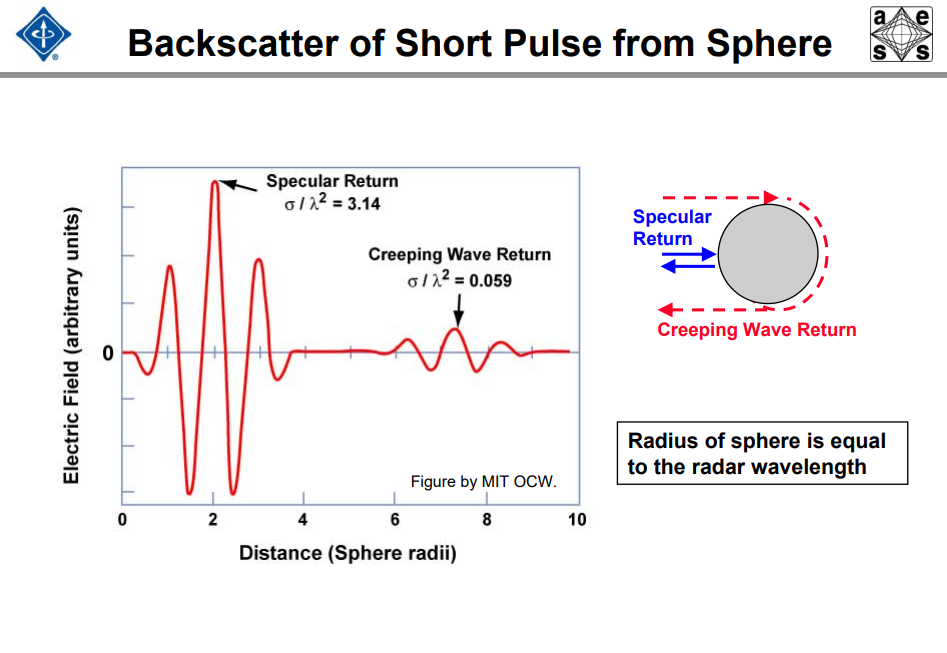
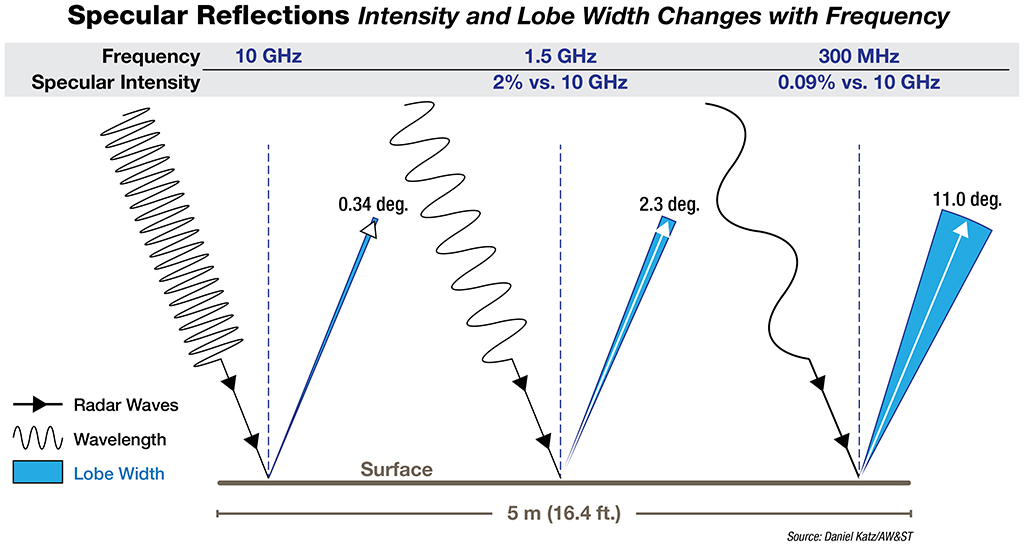
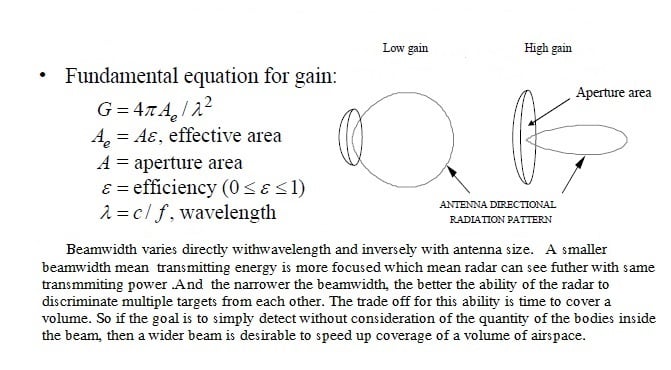
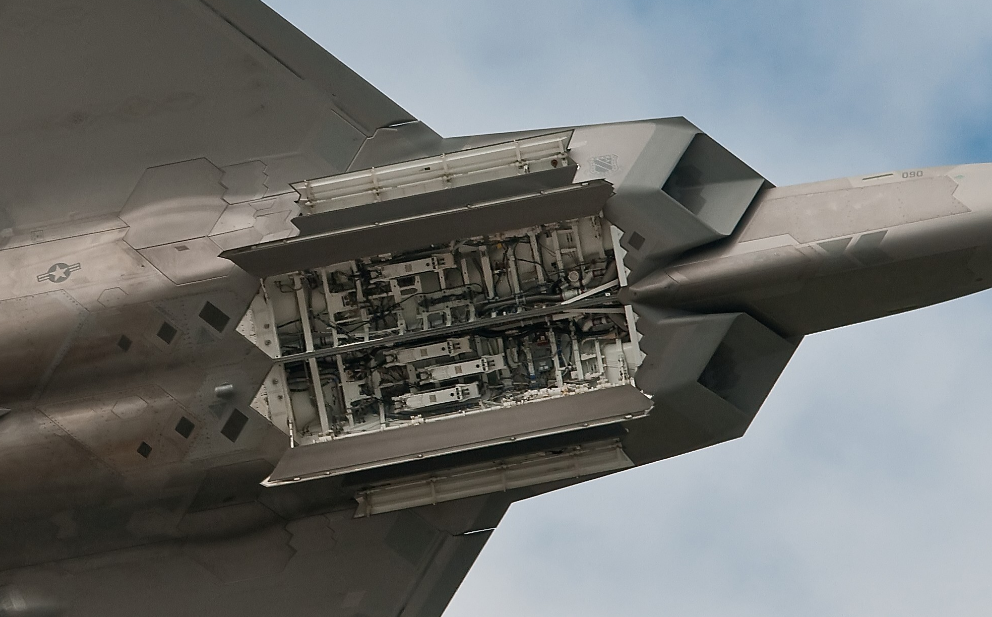
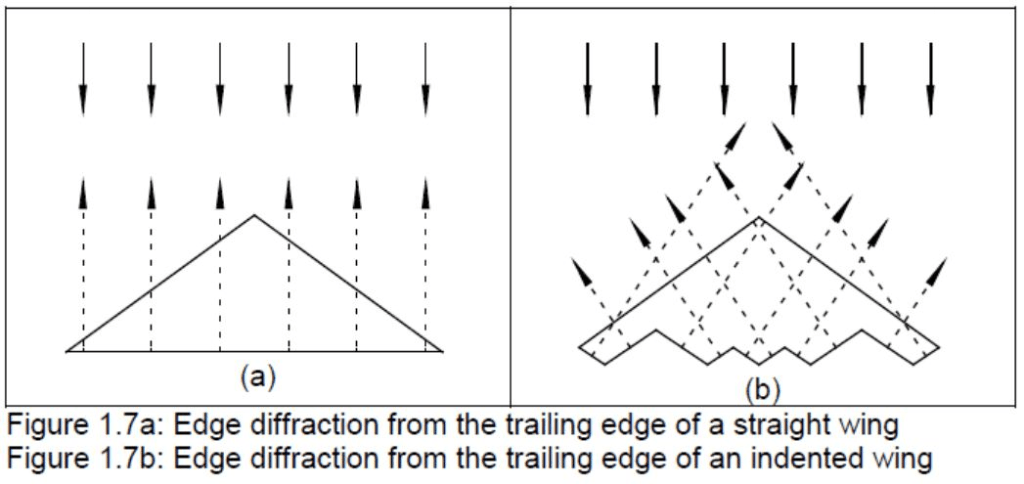
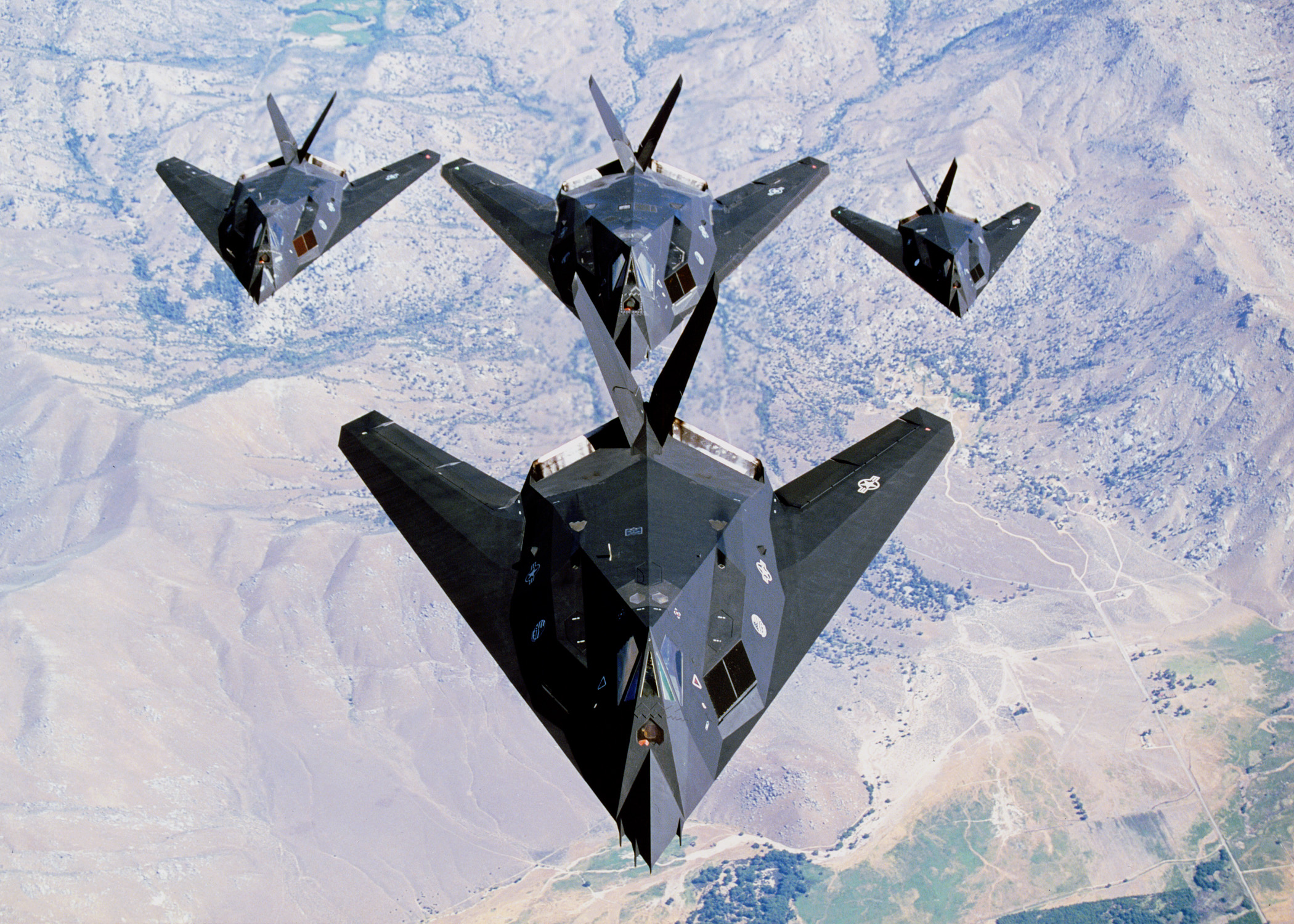
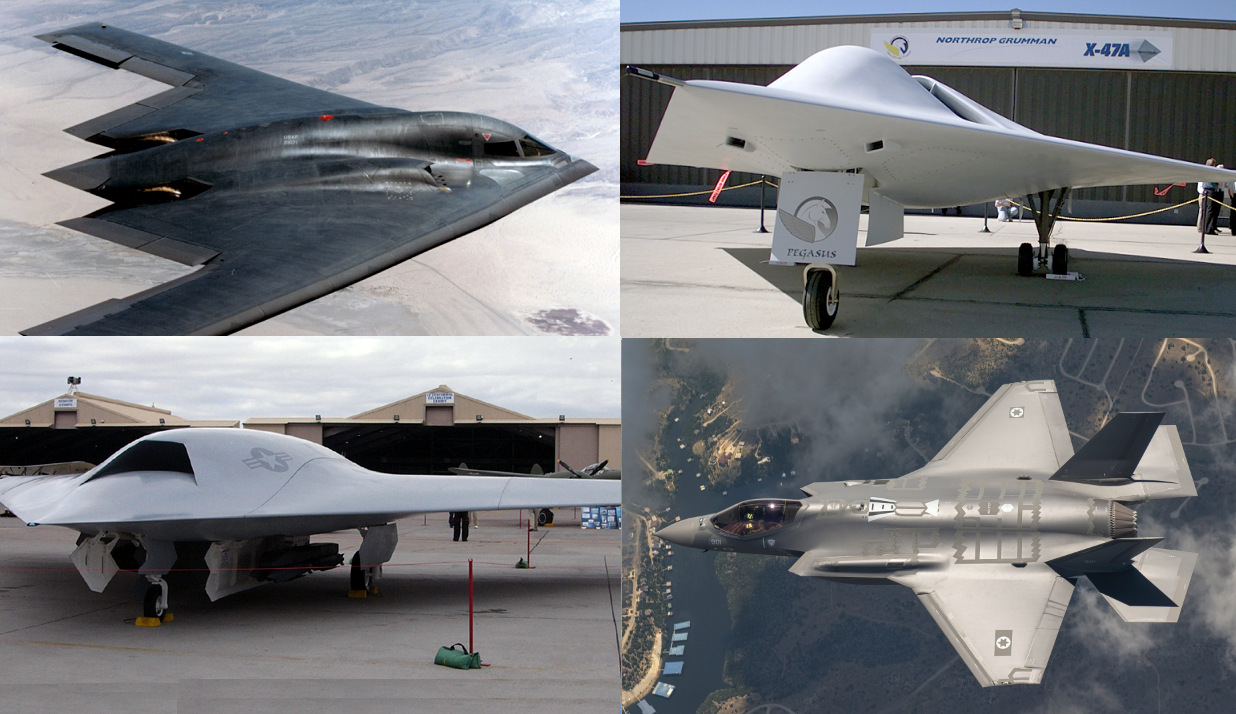
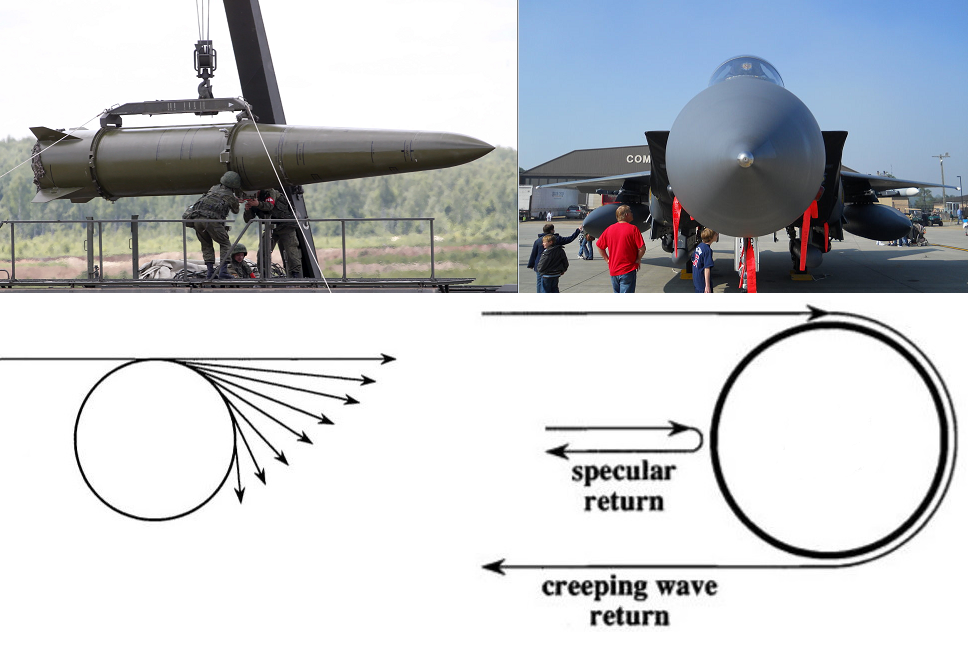
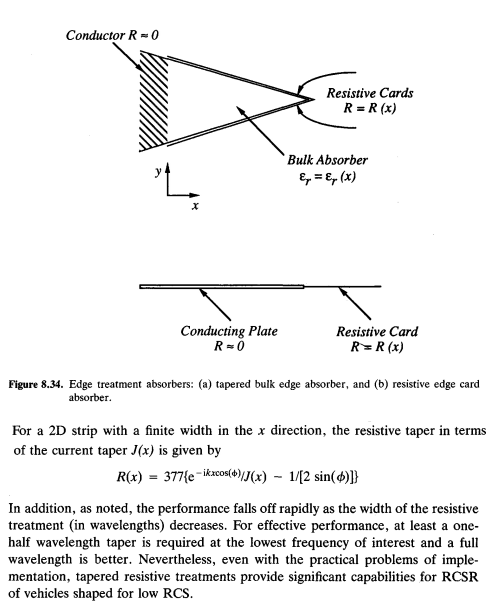
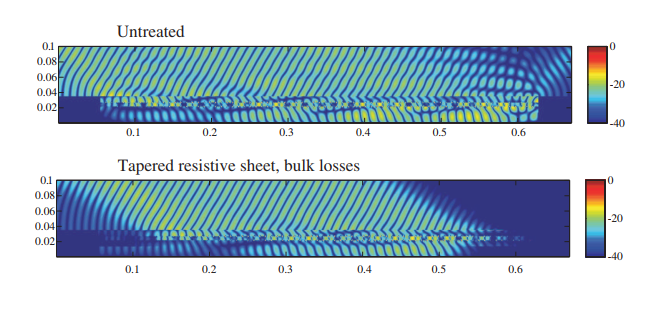

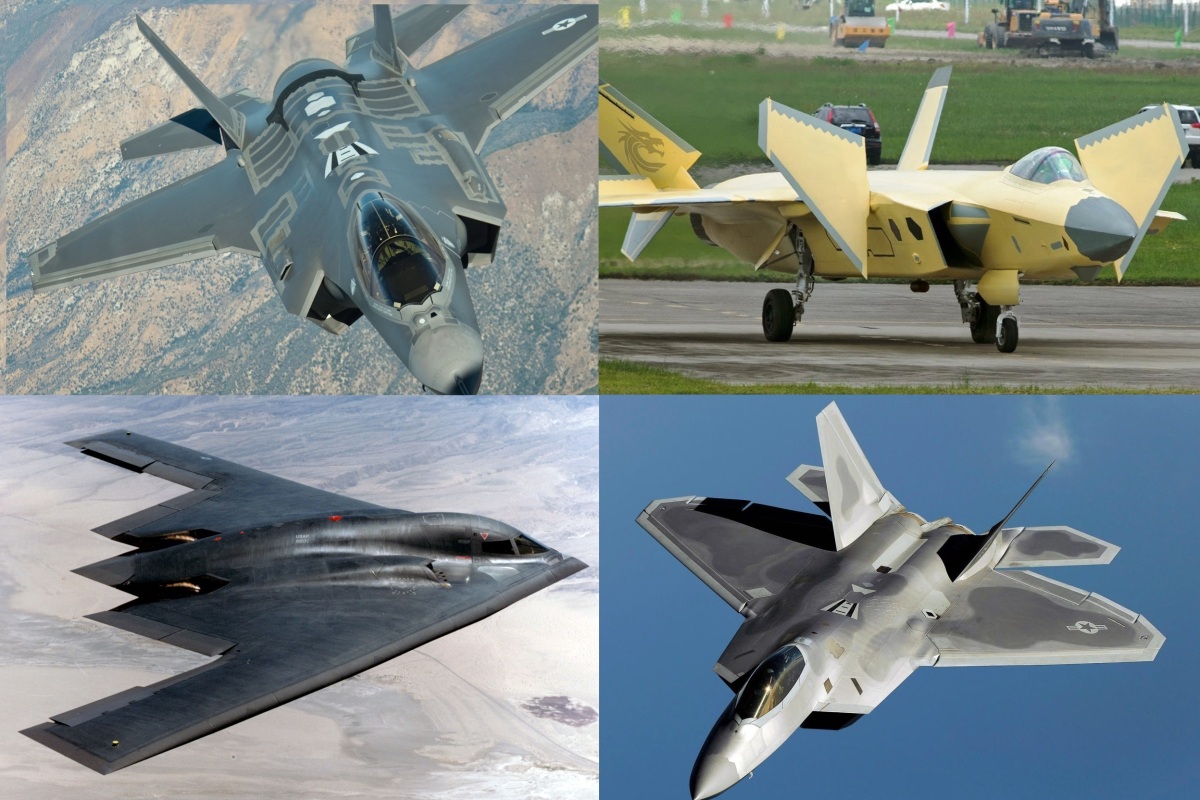
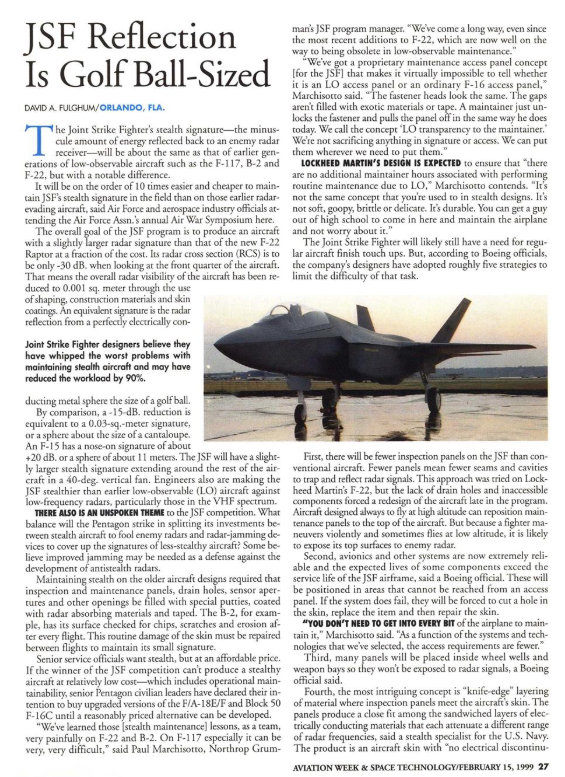
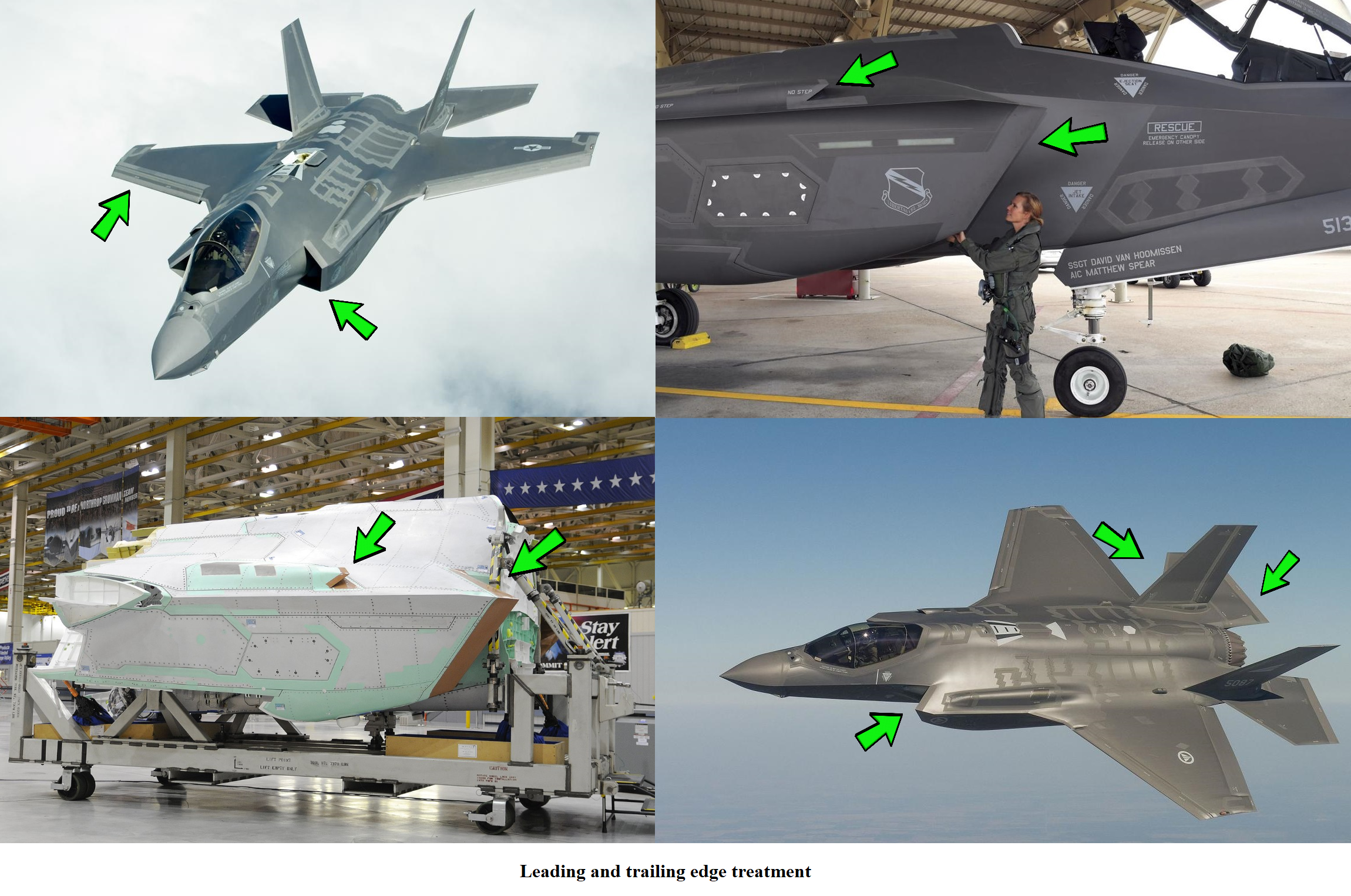
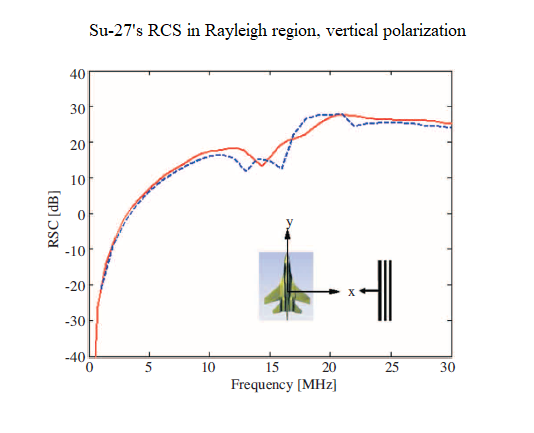
Low frequency radar are less accurate because their beam width are wider than high frequency radar of the same aperture area. Return of two or more targets within the same resolution cell will be merged into one so when your beam width is wider, it is more likely to happen, and it is harder to determine true target location That is a physical characteristic that remain true regardless your radar is analog or digital. Think of it like how bigger optic focus light better.
Historically is the right word. Radars today use complex adaptive digital processing that make useless all that is known from historical performance of analog radars. Nor even talking about interferometric radars like the ones being developed in China to increase the precision at low frequencies. On the other hand, no cm-precise guidance is needed when missiles have seekers themselves.
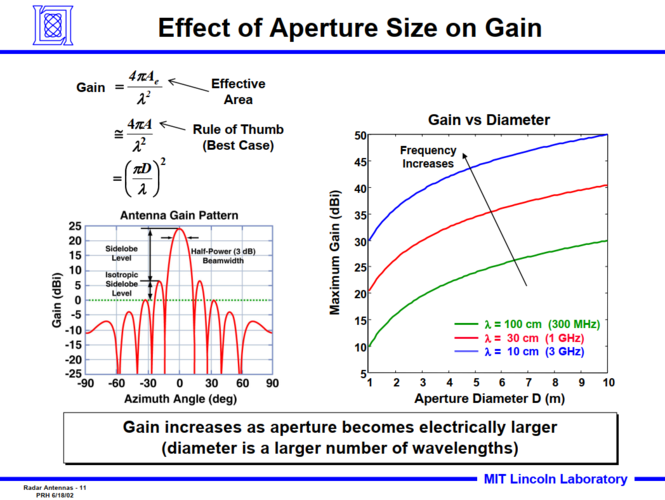
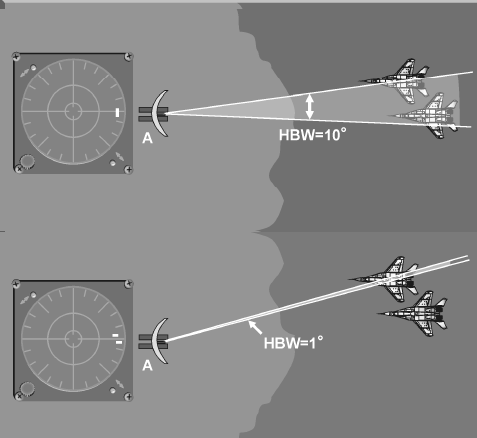
I agree that radar isn't very useful in the fight between stealth aircraft but that mainly because their radar won't be powerful enough to detect each other from extended range rather than the assumption that a stealth fighter should never use its radar for fear of detection. Because detection alone isn't enough, to attack target you need to track and have a firing solution. Missiles don't move at speed of light so to attack an aircraft, the missile must LEAD it. In other words you don't launch missile at the current location of your target but the expected future location, this is even more true for BVR air to air missile because they don't fly a direct path to target but climb to high altitude then dive down on target location.Given they use their radars, which is no-go in a fight between stealth fighters. As said above it makes no sense to empoy radars from stealth planes since they will be given away hundreds of km before they detect anything, specially if the other plane is also a low detectable one. If you are thinking about LPI magic, I think it is pretty obvious such techniques are valid against militaries that have still not get in touch with digital processing, of course against any modern rival this is simply useless.
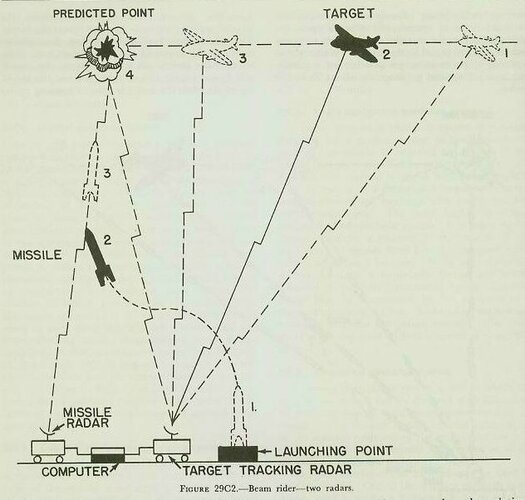
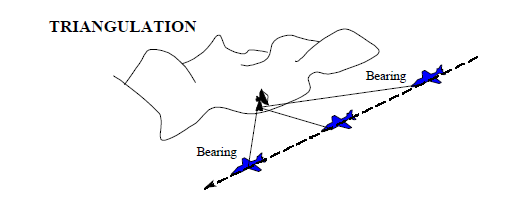
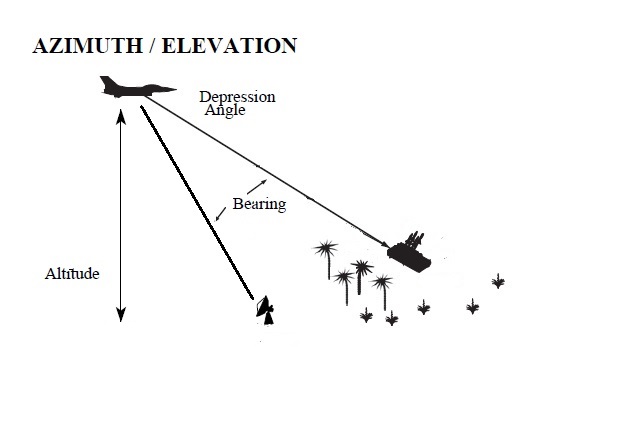
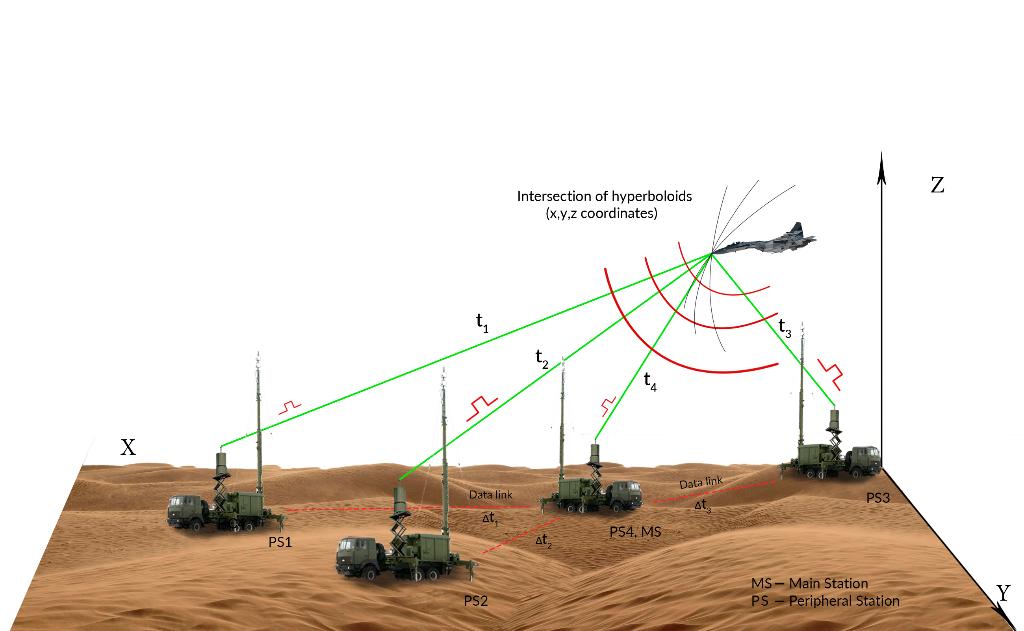
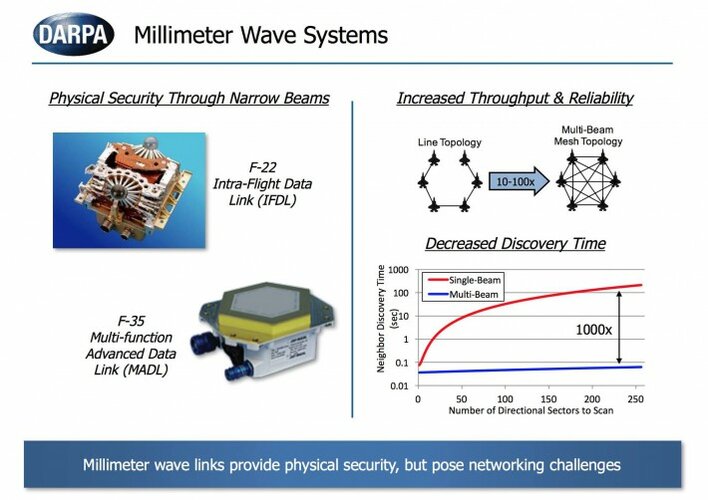
Unless the jammer and the plane are at very different locationsECM also gives the plane away.

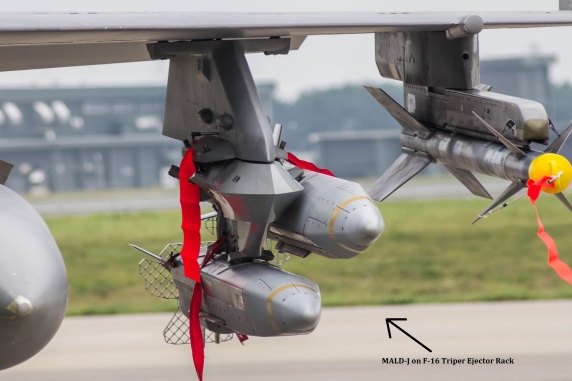
There are ways to reduce effectiveness off stealth aircraft, but the counter of stealth technologies also have many weakness themselves that can be exploited
Stealth has special value, today as always, against weak countries without advanced IADS, where all that is needed to defeat are isolated SAM sites. Against Russia, China and any other advanced military it has already lost a good part of its value and that is the reason we see the development of new platforms intended for broad band stealth from the onset.
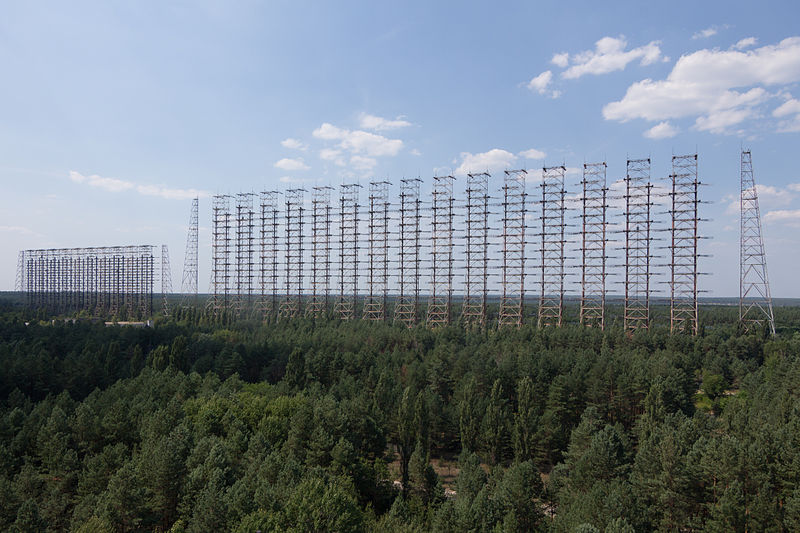
Contrary to popular belief, modern stealth aircraft do implement methods to reduce their RCS value at low frequency
Once the radar wavelength grows past the target’s circumference, the specifics of target geometry cease to be important and only its general shape affects reflection. The radar wave is longer than the structure and pushes current from one side of it to the other as the field alternates, causing it to act like a dipole and emit electromagnetic waves in almost all directions.
secondly, as the radar wavelength of radar grows, the intensity of specular reflections is reduced but its lobes width are widened (the same phenomenon also happened to radar, if aperture size remained the same, the reduction in frequency will increase radar beamwidth). Because the specular reflection lobes are widen ,shaping become less effective because it will be harder to deflect radar wave away from the source
Low frequency radar are less accurate because their beam width are wider than high frequency radar of the same aperture area. Return of two or more targets within the same resolution cell will be merged into one so when your beam width is wider, it is more likely to happen, and it is harder to determine true target location That is a physical characteristic that remain true regardless your radar is analog or digital. Think of it like how bigger optic focus light better.
I agree that radar isn't very useful in the fight between stealth aircraft but that mainly because their radar won't be powerful enough to detect each other from extended range rather than the assumption that a stealth fighter should never use its radar for fear of detection. Because detection alone isn't enough, to attack target you need to track and have a firing solution. Missiles don't move at speed of light so to attack an aircraft, the missile must LEAD it. In other words you don't launch missile at the current location of your target but the expected future location, this is even more true for BVR air to air missile because they don't fly a direct path to target but climb to high altitude then dive down on target location.
There are ways to reduce effectiveness off stealth aircraft, but the counter of stealth technologies also have many weakness themselves that can be exploited
for example: OTH radars are huge stationary targets that can't be camouflaged, that make them easy to find on satellite image and priority targets for long range cruise missile strike and hypersonic missile strike.
But the bigger question to me is whether a row RCS aircraft is really cost prohibitive in the first place. The F-35 is now at nearly the same price per copy as an F-18. There probably is a lot of sunk cost in R&D specifically related to composite materials and shaping, but that is spread across about 600 examples and counting. The main drawback the Su-57 seems to have in that regard is that the production rate and number of users of the aircraft are going to be much lower than F-35, which makes it harder to justify some program costs. This may or may not have influenced Russian attitudes and requirements for RCS; I don't think anyone definitively knows.
I want to clarify something: Firstly, the part that you quoted referring to Rayleigh region when the wavelength is longer than the circumference of the aircraft, normally an aircraft is 15-16 m long, so you need HF frequency to view them in Rayleigh region. The interaction of VHF, UHF, L band radar with normal aircraft is mostly in Mie region. In Mie region, the blended curve, serrated edges, serrated panels, conductive paint over gaps, trailing and leading edge treatment, still have great impact on RCS reduction.That was a very good summary about stealth. To be honest I am familiar with most of that, let me answer a couple of issues you mention
It is just a matter of physics, as you say later on:
So yes, if most of your RCS reduction on a fighter comes from shaping and that is taken away by decameter band radars
Once the radar wavelength grows past the target’s circumference, the specifics of target geometry cease to be important and only its general shape affects reflection. The radar wave is longer than the structure and pushes current from one side of it to the other as the field alternates, causing it to act like a dipole and emit electromagnetic waves in almost all directions.

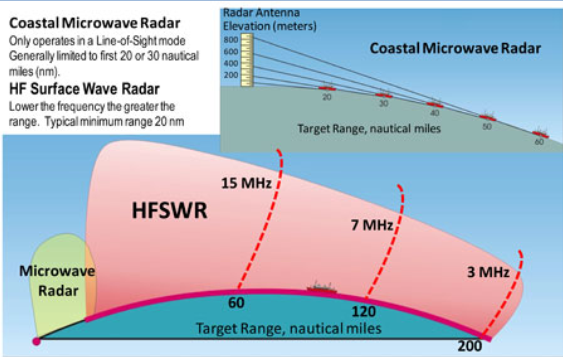
Ferrite magnetic RAM can be much thinner than dielectric RAM because their electrical thickness is much greater than mechanical thicknessplus the RAM's depth is not sufficient against them, your stealth has been greatly defeated.
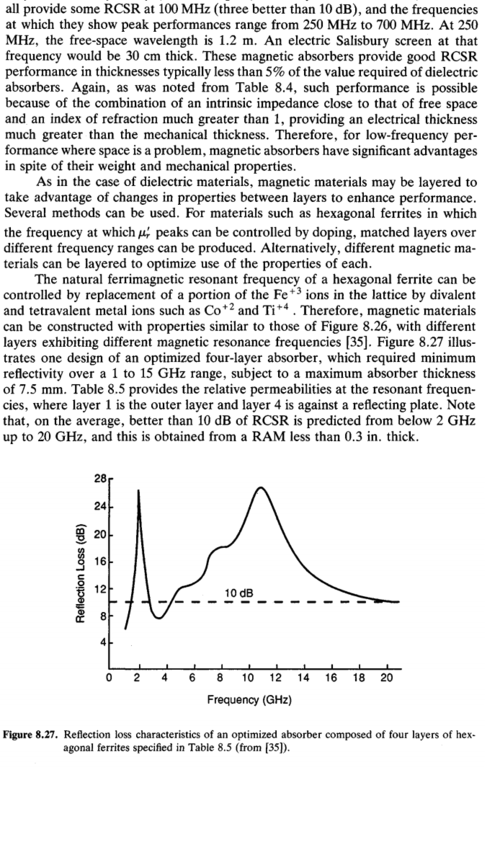

Low frequency radar has the benefit of making the reflection lobes wider but at the same time, wider lobes resulted in lower intensity. In the photo I posted earlier, you can see that the energy return intensity at 300 MHz is about 0.09% of 10 GHzFurther evidence that those back-scatter lobes which are popularly claimed to be almost infinitely narrow and hence practically undetectable are not, more the lower the frequency of the radar.
Of course, I am not referring to the ultimate physical limitation but to the popular dismissal of such radars because "they are imprecise", without giving the topic a further thought and without analisying what level of precision is necessary for them to work effectively. Anyone taking a look at available data for Nebo-M or similar modern system understands that with a detection cell of a few hundreds of meters they are more than enough to put a missile in the right direction and close enough for the seeker to do its job. Plus the fact that knowing the plane is there is already eliminating the surprise effect, allowing to cue higher frequency radars in that direction, sending interceptors etc. As said such disadvantages are also being addressed with interferometric radars that will provide way better precision by increasing massively the effective "size" of the antenna used. Konteyner radars are also boing to be built with overlapping fields for that purpose to
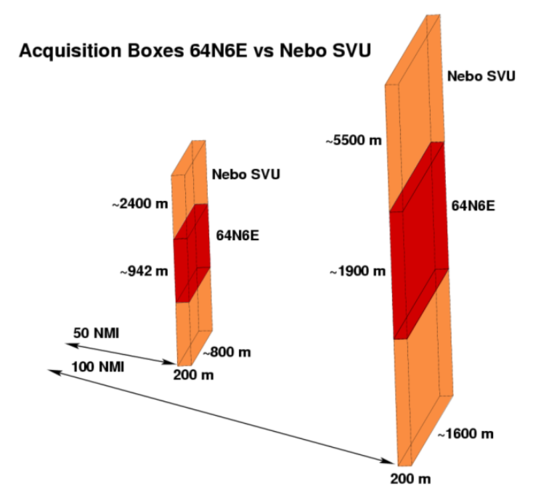
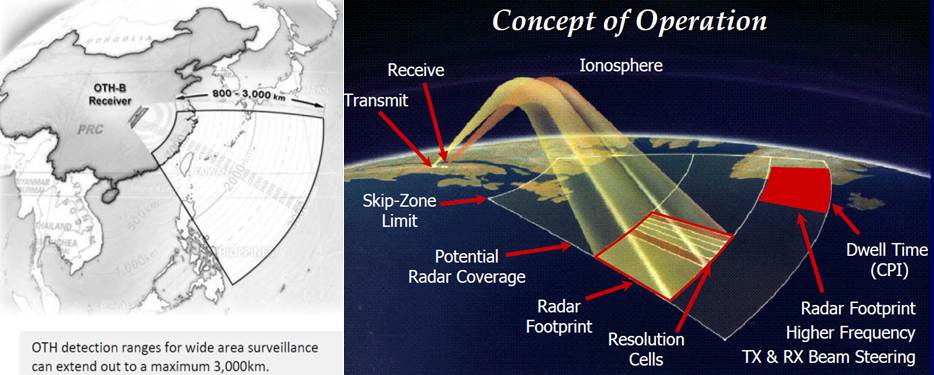
AESA/PESA radar can perform scan very rapidly in irregular pattern so they won't need to reveal position of the carrier for very long, and the pilot has option to use their radar only once a while.A fighter's radar in scan mode is going to reveal regularly the position of the carrier and so allow to calculate course and speed. ESM has the advantage that it is receiving orders of magnitude more power than the emitting radar so it is obviously going to detect the emitter much before the emitter detects anything. This allows to estimate a targetting solution and send a missile to the calculated interception point. ARH does the rest and there is still improvement room there with multispectral seekers starting to be used.
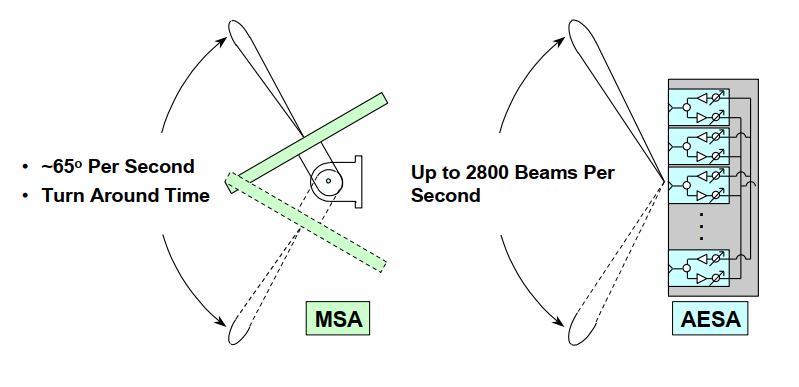
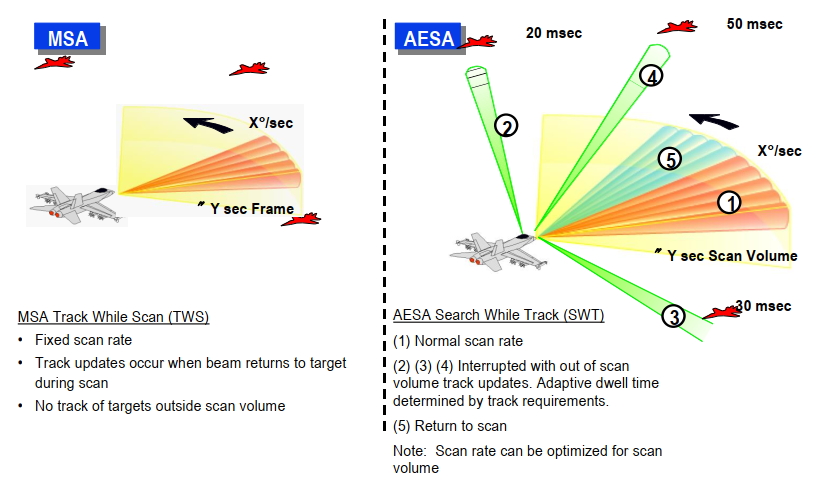
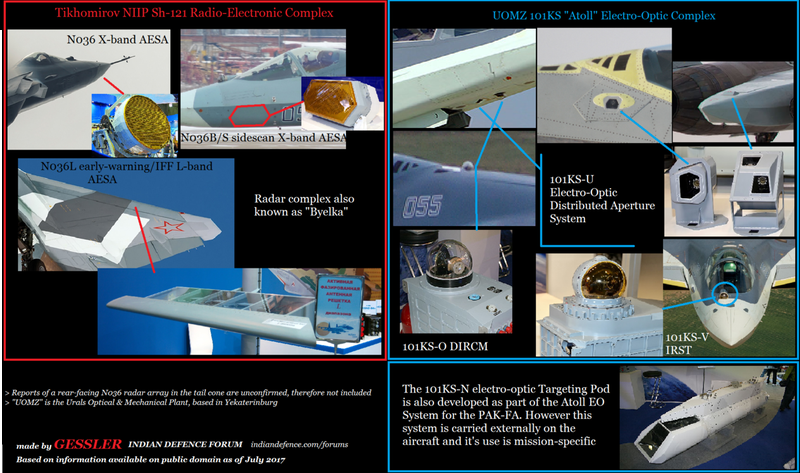
Sorry if my post is off topic, but I think since we are talking about the stealth characteristic of Su-57, it make sense to understand the general idea why a specific part of a stealth aircraft is designed in a specific way. So we can make informed assessmentsCan we stick with the Su-57, please?
These extra long posts detailing a particular technology in detail but in a generic overall way, but not even mentioning the aircraft that is the actual topic, make the thread unreadable.
It has in the past been a feature of other forums, and has the effect of slewing the thread hopelessly off course.
Not singling anyone out, just that this gets predictable and tiresome.
A separate (or existing?) thread is surely more suitable for a generic discussion on the subject?
In my humble opinion, and with no malice intended.
